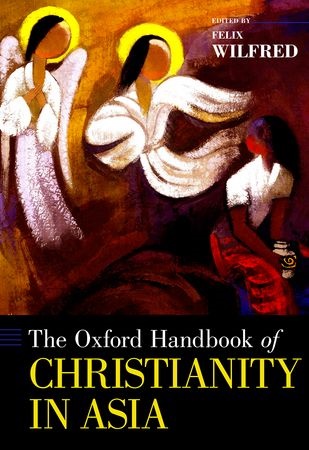 Felix Wilfred has done us a great service by editing The Oxford Handbook of Christianity in Asia (Oxford University Press, 2014). Over four years, with the support of the United Board, Dr. Wilfred and his international editorial board brought together 35 of the best scholars in the world to write special essays for this book on a vast array of themes from a variety of disciplines.
Felix Wilfred has done us a great service by editing The Oxford Handbook of Christianity in Asia (Oxford University Press, 2014). Over four years, with the support of the United Board, Dr. Wilfred and his international editorial board brought together 35 of the best scholars in the world to write special essays for this book on a vast array of themes from a variety of disciplines.
Part I sets the vast stage of this work with five essays on the regional history and geographic diffusion of Christianity in West, South, Southeast, East, and Central Asia. Part II goes immediately beyond these territorial notions of “Cross Cultural Flows and Pan Asian Movements of Asian Christianity.” Here we find seven studies of Pentecostal and charismatic churches, contextual theologies, the ecumenical movement, the rise of feminism, new religious movements inspired by Christianity as well as cross-cultural interpretations of holy scripture. Christianity and Asian cultures have mutually influenced each other for centuries. “The active role of culture and the agency of Asians are clearly manifest here.”
This perspective on mutuality accelerates in Part III with a nine chapters that focus on “Asian Christianities and the Social-Cultural Processes.” Here we find deep discussions of Christianity as shaped by the contentious forces of colonialism, nationalism and modernity. They include problematic issues such as conversion, peace and conflict, democracy and socio-political hierarchy, education, women’s rights and the articulation of Christian values in the emerging public life of early modern Asian societies.
The final section looks to the future of Christianity in Asia. Eight scholars consider how this diverse world religion may evolve in Asia with its social and cultural environments and dynamic regional economies. How will Christianity evolve as a form of public life, as skills of spirituality and as forms of worship? How will Christian communities change through urbanization, expanded education and migrations across the region? Will Christianity continue to inspire tribal and marginalized peoples who live on the edges of physical and social boundaries in Asian nations? A.B. Laksana writes in this context about “multiple religious belonging” in Asia. Francis X. Clooney, S.J. ends the volume with “In the Light of Asia: Reflections of a Western Christian.” Indeed, we of the West have much to learn from Asian Christianity.
Dr. Wilfred’s thematic and inter-disciplinary approach to collecting these essays on Christianity in Asia is refreshing. Asian Christians described in these chapters are subjects with agency rather than being passive recipients of an imported Christianity from the West. “Everywhere operative is the process of appropriation of the Christian faith and institutions according to the genius of the various peoples and societies of the continent.” (p.7) Missionaries from the West played important roles, but the primary narrative is not simply their bringing the Good News to Asia. Indeed, Christianity rides many waves of migration and cross-cultural encounter within the region. The United Board’s work in strengthening Christian presence in Asian higher education fits precisely into this pattern of intra-Asian collaboration.
We can also sense from these pages the ambiguity of the relationship between Christianity and modernity in Asia. Several chapters describe the role of Christianity in the process of modernization in Asian societies. “Ironically,” says Wilfred, “the very Christianity viewed in the West as an anti-modern force was looked to in Asia as a gateway to modern science, technology, education, (and) modern medicine.” (p.9) Christian colleges established in Asia over the past 200 years, for example, display the modernizing legacy of Christianity in Asian contexts. This is the legacy that the United Board seeks to strengthen and extend into the 21st century.
Reviewed by Glenn Shive, Vice President for Programs, United Board
(First published in Horizons in June 2015)
